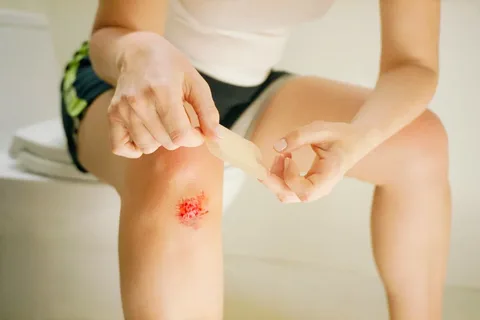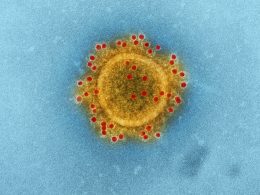Introduction
Cuts, scrapes, and wounds are inevitable in our daily lives. Understanding how to properly care for these injuries at home is not only practical but crucial for a prompt and healthy recovery. Dr. Thomas Canto, MD, FACS, Medical Director at Baystate Wound Care Center, emphasizes the significance of home wound care to facilitate tissue growth, prevent infections, and minimize scarring.
Stock Your First Aid Kit
A well-equipped first aid kit is the cornerstone of effective at-home wound care. Dr. Canto recommends having the following items readily available:
- Elastic Bandage Wrap: Ideal for providing support and compression.
- Dressings/Bandages in Various Sizes: Ensure you have a range to fit the specific wound.
- Roller Bandages: Preferred over tape to hold dressings in place, minimizing skin tears during removal.
- Gauze Pads: Essential for cleaning and covering wounds.
- Xeroform Gauze: A non-stick dressing that promotes a moist environment for healing.
- Antibiotic Ointment or Petroleum Jelly: A thin layer aids in keeping the wound moist for faster healing.
- Vinyl, Nitrile, or Latex Gloves: Ensure proper hygiene during the wound care process.
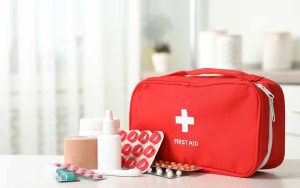
5 Steps for Effective Wound Care at Home
Master the art of at-home wound care with these five crucial steps:
- Wash Your Hands:
- Cleanliness is paramount. Wash hands thoroughly with soap and water before tending to any wound.
- If soap and water are unavailable, using hand sanitizer is a suitable alternative.

- Stop the Bleeding:
- Apply firm pressure directly to the wound using a bandage to halt any bleeding.
- The duration may vary (one to five minutes) depending on the severity of the wound.
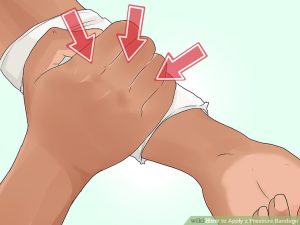
- Clean the Wound:
- Gently cleanse the area with water to remove any debris.
- Avoid using alcohol or peroxide on open wounds, as they may hinder healing by killing healthy cells.
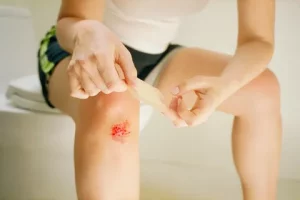
- Apply Moisturizing Ointment:
- Research suggests that maintaining a moist environment accelerates healing.
- After cleaning, apply a thin layer of antibiotic ointment or petroleum jelly to keep the wound moist. If the wound is cleaned thoroughly, antibiotic ointment might not be necessary.
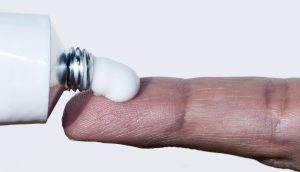
- Protect the Wound:
- Apply a bandage or xeroform gauze to cover the wound.
- Utilize roller bandages to hold the dressing in place, avoiding excessive tightness to prevent circulation issues.
- Change the bandage at least once a day or immediately if it becomes dirty or wet.
When to Seek Medical Attention
While many wounds can be effectively treated at home, some situations warrant professional medical attention. Contact a doctor or visit an urgent care or emergency room if:
- The wound is deep, jagged, or exposes fat, tissue, bones, or tendons.
- Inability to move body parts normally.
- Uncontrolled bleeding persists.
- Difficulty thoroughly cleaning the wound.
- The wound is a result of a human or animal bite.
- Lack of proper healing after two to four weeks.
- Presence of comorbidities such as diabetes, peripheral artery disease, or collagen vascular disease, which may complicate the healing process.
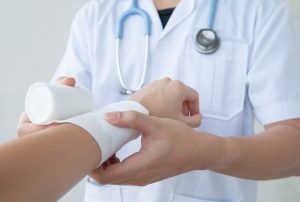
What to Do When Wounds Won’t Heal
For persistent or complicated wounds, Baystate Wound Center offers specialized care. Their multidisciplinary team, comprising physicians and health professionals, utilizes advanced technologies, including bioengineered tissue and hyperbaric oxygen therapy, to address chronic, non-healing wounds. Explore other health problems
Conclusion
Mastering the art of at-home wound care is empowering and essential for everyone. Armed with the right knowledge and a well-stocked first aid kit, you can confidently handle most minor injuries. However, recognizing when professional help is needed ensures the best possible outcome for more severe or complicated wounds. With these insights, you are well-equipped to navigate the path to optimal wound healing and overall well-being.






